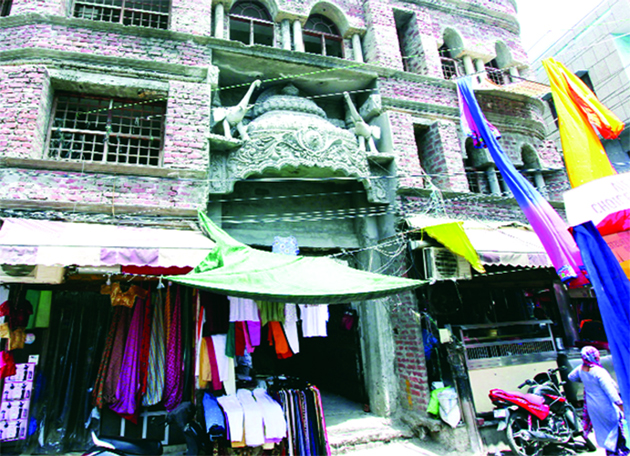Rajbir Singh Jamwal
Within the chronicles of history of Durg?radesha, endless stories abound of courageous and powerful Dogra rulers spanning from Raja Bahulochan to Maharaja Hari Singh, whose legacies have forever shaped the lands under their rule. However, amidst the narratives of celebrated figures, there exist remarkable individuals whose stories, like whispers in the winds of time, have metamorphosed into unsung heroes. One such figure is Maharaja Mal Dev, a fearless leader whose exceptional feats and profound political vision shaped the destiny of Jammu Kingdom.
Accession
Mal Dev succeeded his father Jodh Dev and ascended to the throne in 1361. He made a significant decision to move the Dogra capital from Babbapura to Jammu, aiming to restore its ancient glory since it had been left abandoned by its earlier rulers due to constant invasions of Ghaznavid forces. According to a local ballad, It is believed that he brought a large rock from the Tawi River and placed it in Mohalla of Kali Jani where he gathered his kinsmen and the local people and proclaimed himself as the ‘Raja’. The Purani Mandi building, which is now extinct, was originally constructed by him. Within the mansion, there is a corner that contains a small shrine, marking the exact location where Mal Dev first sat on his gaddi as the ruler of Jammu. It is also the same spot where all the subsequent Dogra rulers received their “Raj-tilak” during the time of accession.
Conflict with the Sultans of Delhi
During Mal Dev’s reign, he faced relentless battles against adversarial forces. One significant episode in his life involved a confrontation with his brother-in-law, the Raja Kailash Pal of Dhameri (Nurpur Kingdom). Driven by deep resentment, Mal Dev initiated an unexpected assault on his kingdom, resulting in the downfall of Rana Kailasa and the subsequent destruction of the Nurpur fort and palace. The remnants of the ruins were used to construct the renowned brick palace at Purani Mandi in Jammu, serving as a testament to Mal Dev’s might and conquests.. Fueled by vengeance, the Wazir of Dhameri lodged a complaint with the Sultan of Delhi, citing Mal Dev’s assertive actions Mal Dev’s actions which further strained his relations with the Delhi Sultanate. This grievance ultimately sparked a confrontation between the Dogra and Tughlaq forces and a battle was fought near the Borders of Dhameri Kingdom. Despite facing overwhelming odds, the Raja showcased his resilience and emerged victorious in the ensuing battle.With his valorous tales of battle, Mal Dev instilled such fear in his enemies that even the Sultan vowed never to trespass upon his territory again. One of the significant challenges faced by Mal Dev was dealing with the Khokhars, a dominant tribe spread across the foothills of Jammu and Punjab. The Khokhars, known for their allegiance to Jammu’s adversaries, constantly rebelled against its rule. This persistent clash between the Dogras and the Khokhars escalated, resulting in a prolonged conflict that spanned over a century.
Timur’s Invasion of Jammu and the Battle of Tawi (1399)
After the Invasion of Delhi, Timur stormed Meerut and Haridwar and proceeded to enter the Shiwalik region in 1399. During his campaign, he engaged in fierce battles, causing widespread destruction and looting in the outer valleys between the Satluj and the Beas rivers. After reaching the vicinity of Jammu Hills, Timur received information that the Jammu stronghold was situated nearby, connected to the Shiwalik and Trikuta mountains. He was also informed that the inhabitants of Jammu were not submissive to the Sultans of Hindustan. Based on this knowledge, Timur decided to march against the Dogra Population of Jammu. On February 27th, he dispatched his army across the river towards the base of the mountain on the left side of the town.The people of Jammu took precautionary measures by evacuating their women and children to the mountain peaks and fortifying their villages.According to Tuzak-i Timuri, the Raja and his brave warriors had strategically positioned themselves in the river valley, stretching from Pir-Kho to the present Gujjar Nagar Bridge. This defensive formation presented a formidable challenge for Timur, as he couldn’t plunder Jammu town without engaging in direct conflict with the Dogra army. Mal Dev initiated a direct assault, mobilizing his entire army and committing all of his forces to achieve the element of surprise against his adversaries. Having committed all of his men to the cause, the Raja succeeded in repelling the Gurkani forces. Timur’s army advanced towards the base of the Jammu hill but eventually retreated after looting the nearby villages and hereby marched towards the Indus on his way back to his capital Samarqand.The retreat of Timur through the Jammu hills has left a lasting memory of the heroic battle fought between Maharaja Mal Dev and one of the most notorious invaders from Central Asia.
“The Rai (Mal Dev), accompanied by a group of courageous and daring warriors, had strategically positioned themselves on a formidable mountain. From there, they skillfully launched their arrows and echoed their voices, creating a clamor reminiscent of howling dogs beneath the moon.”
Maharaja Mal Dev’s rule was characterized by unwavering political aspirations, territorial growth, and courageous defiance in the face of external threats. Sadly, his remarkable legacy has been largely overshadowed by the passage of time. As we contemplate the overlooked heroes who molded our history, it becomes essential to revive the memory of Maharaja Mal Dev and give due recognition to his significant contributions.
(The author is Dogra History Enthusiast)
Trending Now
E-Paper


